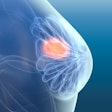
In particular, the use of spatially modulated beams, such as those created during intensity-modulated radiotherapy (IMRT), may result in differing communicated-dose effects to those seen in traditional treatments based on uniform fields. But without radiobiological models to predict the results of irradiation with modulated fields, these effects can't be quantified and incorporated into radiotherapy treatment planning.
To gain insight into the radiobiology underlying IMRT and help radiation oncologists reap the maximum benefit from this advanced technique, an Australian research collaboration has performed a series of in vitro experiments examining cell survival following exposure to spatially modulated beams (Physics in Medicine and Biology, September 21, 2007, Vol. 52:18, pp. 5469-5482).
Previous research has identified the existence of a classical (type I) bystander effect, in which a cell's survival is reduced when communicating with irradiated cells. In this latest work, the researchers, from Sydney's Royal Prince Alfred Hospital and the University of Sydney, as well as the Sir Charles Gairdner Hospital in Perth, have identified two new types of bystander effects (dubbed types II and III), which increase cell survival when nearby cells are irradiated.
"We are the first to identify the types II and III bystander effects because the specific conditions of experiments isolated these effects," explained lead author Elizabeth Claridge Mackonis, a medical physics registrar at the Royal Prince Alfred Hospital. "These conditions are particularly relevant to modern radiation therapy approaches such as IMRT and IMPT [intensity-modulated proton therapy], where spatial and temporal modulation of the radiation beam are inherent to the treatment."
Cell survival
The researchers examined the survival of malignant melanoma cells exposed to a spatially modulated megavoltage photon beam. Multileaf collimators were used to create two field modulations: a quarter field, in which 25% of cells were exposed in a block; and a striped field, in which 25% of cells were exposed in three stripes. They also examined a uniform open field and a uniform shielded field (created by closing the collimators), for comparison with the modulated field's unshielded and shielded regions.
Following irradiation, survival fractions were calculated by comparing the survival of irradiated cells with that of unexposed control cells. "The most significant difference in survival fraction was found between the cells exposed to a uniform radiation field and those exposed to the partially shielded fields, where unirradiated cells were present," Mackonis told medicalphysicsweb.
Upon irradiation with either modulated field, cells in the shielded regions showed enhanced survival compared with those receiving the same dose from a uniformly shielded field. For example, when the unshielded region received a lethal dose of 10 Gy, the shielded cells (which received a leakage dose of 0.5 Gy) showed survival fractions of 0.97 and 0.85 for the striped and quarter fields, respectively. Cells receiving 0.5 Gy from a uniformly shielded field exhibited a lower survival fraction of 0.78.
These results imply the existence of an effect in which cells receiving a low scattered radiation dose exhibit increased survival when neighboring cells receive a lethal dose: the type II bystander effect. One possible explanation for this process is that when the exposed cells receive a lethal radiation dose, their death stimulates a repair mechanism in the viable cells within the shielded region.
In the unshielded regions, cell survival decreased with increasing dose for all field modulations, with few cells surviving at 10 Gy and above. Cells receiving a direct 3 Gy dose from a modulated field demonstrated increased survival fractions (0.53 and 0.71 for striped and quarter fields, respectively), compared with cells receiving 3 Gy from a uniform field (0.28). This is the type III bystander effect.
The researchers attributed this effect to intercellular communication, in which cells report their DNA integrity to their neighbors. The small leakage dose to the shielded region may act as a "conditioning dose" and elicit an adaptive response that causes shielded cells to signal to their unshielded neighbors and so increase their survival.
Enhanced model
Ultimately, the clinical implications of these bystander effects need to be determined. This work demonstrates that cell death from spatially modulated radiation fields is not totally predicted by a local dose response and emphasizes the need for improved radiobiological models. The researchers predict such models will enable clinicians to explicitly account for bystander responses in radiotherapy and perform radiobiological treatment optimization.
Another implication of this research is identification of the previously unexploited therapeutic opportunity provided by bystander signalling. "By understanding the mechanism by which irradiated cells affect the viability of neighboring cells, clinicians could block or enhance the communicated effects to elicit additional therapeutic gain," Mackonis said.
She explained that the researchers now plan to develop models that translate the in vitro results to a clinical situation, and hope to isolate the individual factors that influence cellular response in spatially and temporally modulated radiation fields. "We are aware that the situation will be more complex in vivo and will need to study the effects in animal models before changing human treatments," she said.
By Tami Freeman
Medicalphysicsweb science editor
November 23, 2007
Related Reading
Lung function guides IMRT planning, October 24, 2007
© IOP Publishing Limited. Republished with permission from medicalphysicsweb, a community Web site covering fundamental research and emerging technologies in medical imaging and radiation therapy.

















